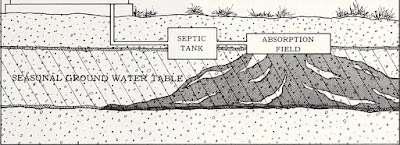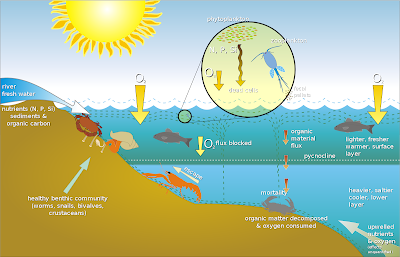Evelyn's New Blog: Septic System Basics - What You Need To Know!
Evelyn's New Blog: Septic System Basics - What You Need To Know!
https://evelynfandersen.blogspot.com/2020/05/septic-system-basics-what-you-need-to.html
Septic System Basics - What You Need To Know!
Residential septic systems, or subsurface sewage disposal systems, are a small scale sewage treatment system. They are common in areas that have no connection to a municipal sewage system and are the responsibility of the property owner to maintain.
Septic Inspections and Tank Cleaning
Periodically inspecting and pumping out the septic tank can help protect your investment from expensive repair costs, along with environmental issues that can occur from lack of maintenance.
Septic System Design and Construction
Septic systems, if designed, constructed, and maintained properly can provide you with effective treatment of household waste-water for the long-term. If abused or not maintained properly, repairs or replacement can be costly, and the concerns of environmental issues like groundwater contamination can occur, not only affecting your water supply but others around you.
Septic System Failure
The most common reason for early septic system failure is because of improper maintenance. A system that has been poorly maintained and not pumped out on a regular basis, sludge, and solid material build up in the septic tank, then flows into the drainage-field or leach-field field. Once these solids reach the fields clogging of the pipes will start to occur and extensive repairs or replacement may be necessary.
Parts of a Septic System
A typical subsurface disposal system consists of four major parts, the piping from the house, septic tank, drainage or leach-field, and the soil. Soil being the one major part of the system that most homeowners never think of. Microbes in the soil are what digest or remove most of the contaminants from waste-water before it enters the groundwater supply, or aquifer.
Septic Tank
The septic tank is a buried watertight container typically made of concrete, fiberglass, or polyethylene. It holds the wastewater long enough to allow solids to settle out, forming sludge, and oil and grease to float to the surface as scum. It also allows partial decompositions of the solid materials. Compartments and a T-shaped outlet in the septic tank prevent the sludge and scum from leaving the tank and traveling into the leach field/drain-field area. As you will see the septic tank is just one of many components that make up the entire on-site wastewater sewage disposal system.
Leaching Fields or Drain Fields
The wastewater exits the septic tank and is discharged into the leach field/drain field for further treatment by the soil. The partially treated wastewater is pushed along into the leach field/drain field for further treatment every time new wastewater enters the tank.
The most common leach field/drain field consists of a series of trenches containing perforated pipe surrounded by septic rock, or gravel, and covered with mesh and dirt. The effluent entering the leach field/drain field is partially absorbed into the soil and partially evaporated. The leach field/drain field should not be driven on or covered by a driveway, sidewalks, parked vehicles, or patios.
If the leach field/drain field is overloaded with too much liquid, it will flood, causing sewage to flow to the ground surface or create backups in plumbing fixtures and prevent the treatment of all wastewater.
Environmental Concerns
When properly sited and maintained on a routine basis, septic systems are an excellent waste management alternative. However, when not properly sited or maintained, they can cause contamination of surface and groundwater resources, which leads to public health, pollution problems, and damage to the environment.
If you are the owner of a septic system, learn and understand the basics of how a subsurface disposal system works and what steps you need to take to ensure it will be properly maintained. If you let your septic system go or don't have your tank pumped every two to five years, you may be faced with the task of restoring your leach field or replacing your entire system which can be tens of thousands of dollars which is a TON of Money. So please take care of your septic system like it is another child in the family and you'll never have to worry.
For more information on the environment, septic systems, proper maintenance, and grease trap cleaning procedures click here.
from Ed's Environmental Blogger https://edwardhorbachukiii.blogspot.com/2020/05/septic-system-basics-what-you-need-to.html
via Evelyn's New Blog https://evelynfandersen.blogspot.com/




